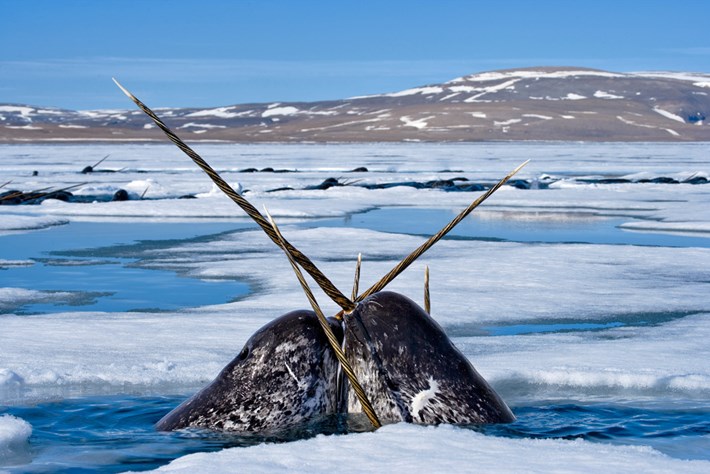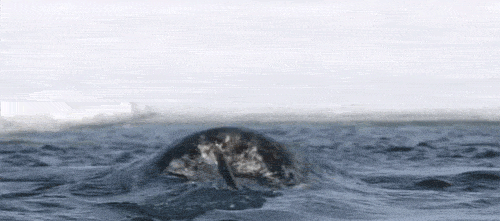What Exactly IS a Narwhal Tusk?
The truth behind the narwhal’s most unique accessory

Narwhals are, arguably, one of the most enigmatic species of the Arctic Ocean—and rightfully so—they’re pretty incredible. Although few people have ever seen a narwhal, they are widely recognized for their unique tusk which lends itself to the most magical of nicknames: “unicorn of the sea.” And who doesn’t love a unicorn of any kind, really? But I needed to know more. Let’s dive in…

Firstly, the narwhal’s tusk is actually an overgrown spiralized tooth and it’s one of only two teeth they’ll ever possess. In fact, if you were lucky enough to spot a narwhal in the wild you may not even recognize it as a narwhal at all since many of them lose their tusks over time (hence its mysterious and elusive reputation!). And while there are a few other animals that have similarly protruding teeth (like walruses and elephants), the narwhal tusk is unique still.
Never Miss An Update
Sign up for Ocean Conservancy text messages today.
Essentially, it’s an inside-out tooth. The narwhal tusk is incredibly sensitive on the outside, with up to ten million nerve endings on each one. In 2014, researchers even found significant changes in heart rate when alternating solutions of high-salt and freshwater were exposed to the external surface of the tusk. I imagine this as similar to that feeling you get with really cold ice cream on a sensitive spot on your tooth—you know—but way worse. How in the world does the narwhal survive with such a thing in the frigid Arctic waters?

The narwhal tusk is also much softer on the outside and gets increasingly hard and dense on the inside. AND it’s flexible—the end can bend about a foot in any direction! Because of their tooth/tusk, narwhals are considered a “toothed whale” or an odontocete cetacean. This suborder of ocean mammals includes some of my other favorite ocean creatures like the beluga, dolphin and orca. But unlike their relatives, the narwhal has no “chewing” teeth, just the one tusk and an occasional backup. Interestingly enough, this second tooth can occasionally grow into a second tusk and either one is able to grow up to nine feet long.
It’s also different for lady narwhals. I mentioned before that not all narwhals possess a tusk. That’s because while males typically have a tooth that grows more prominent over time, most females instead lose them if they ever developed one at all. You may find a super unique female who was able to grow a small tusk of her own but if you happen to come across two narwhals “tusking,” it’d be a safe bet that those are two males. Oh, and tusking refers to two narwhals crossing tusks as either a form of duel OR cleaning each other’s teeth—sounds like brotherly love to me.

There’s research that suggests the narwhal tusk is used primarily for hunting, but contrary to what you might be imagining, they don’t actually spear their food. In fact, there’s video evidence indicating that they instead give a quick and firm “tusk tap” to momentarily stun their prey (usually fish, shrimp or squid) and then quickly suck them up.
Theories abound regarding the true porpoise—I mean, purpose of the narwhal’s tusk. Some think the tusk helps detect sound and temperature, while others believe it has more of a physical functionality, like breaking through ice. On the other hand, some folks hypothesize it’s used for mating rituals to impress female narwhals. I personally think these ideas shouldn’t be so mutually exclusive. I mean, finding a suitor with a solid sense of direction that can break me out of an icy barrier AND bring home dinner? Sign me up!
